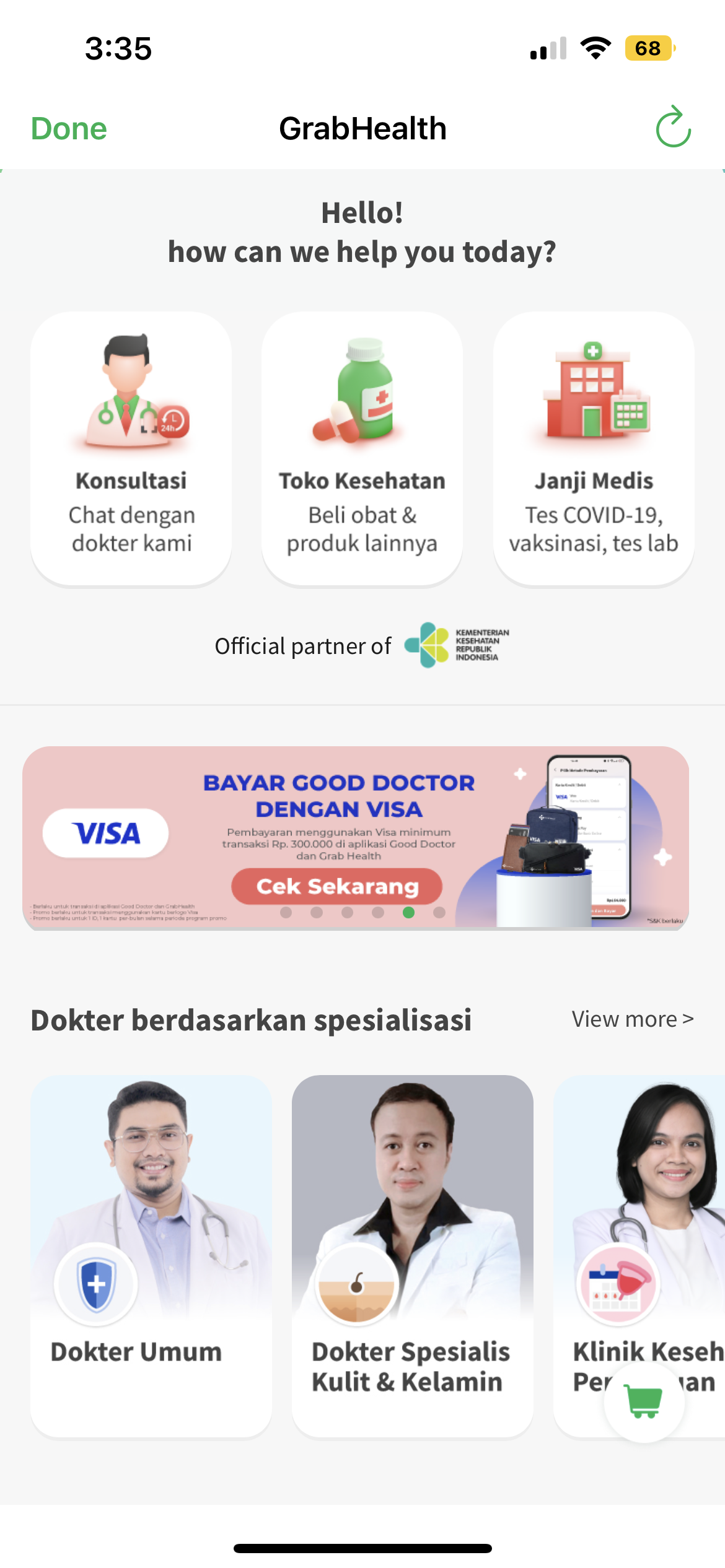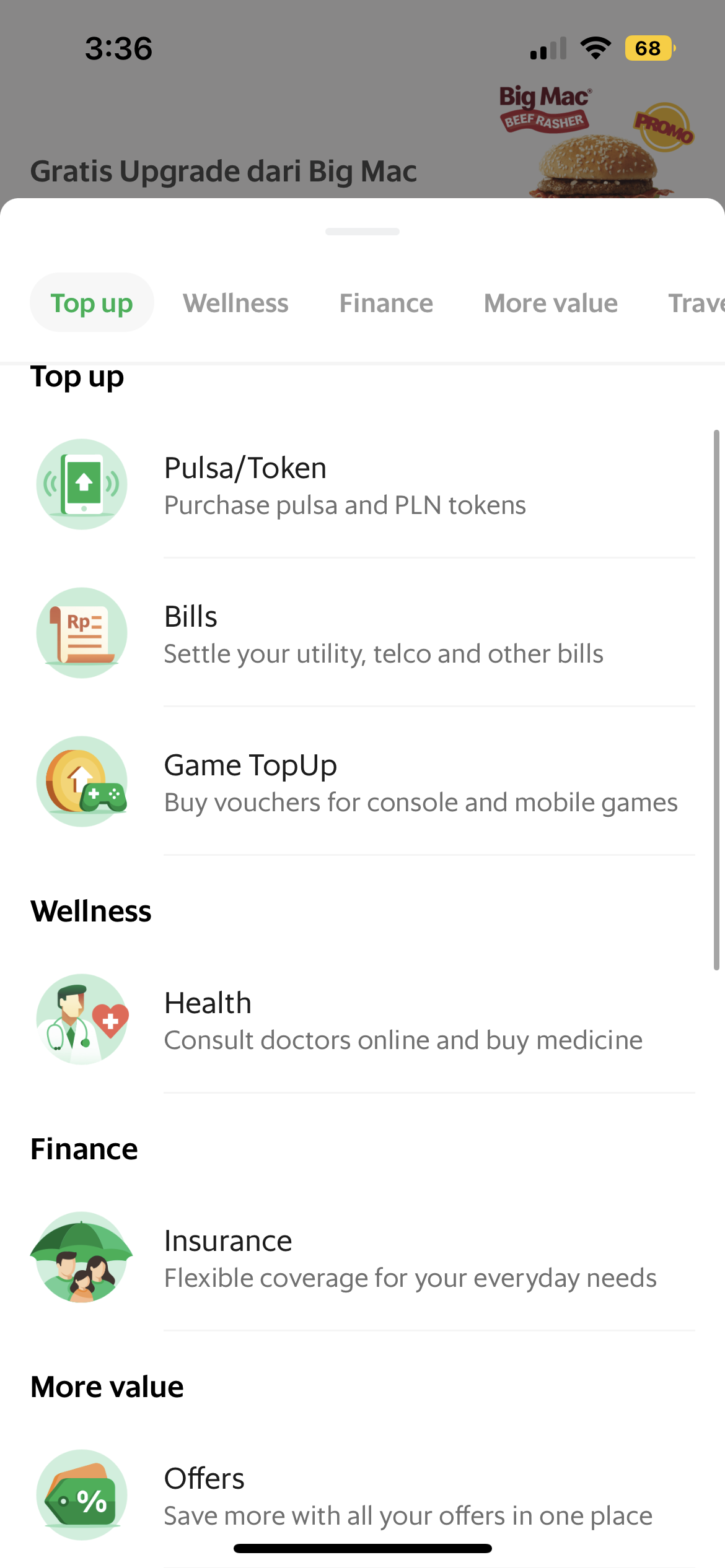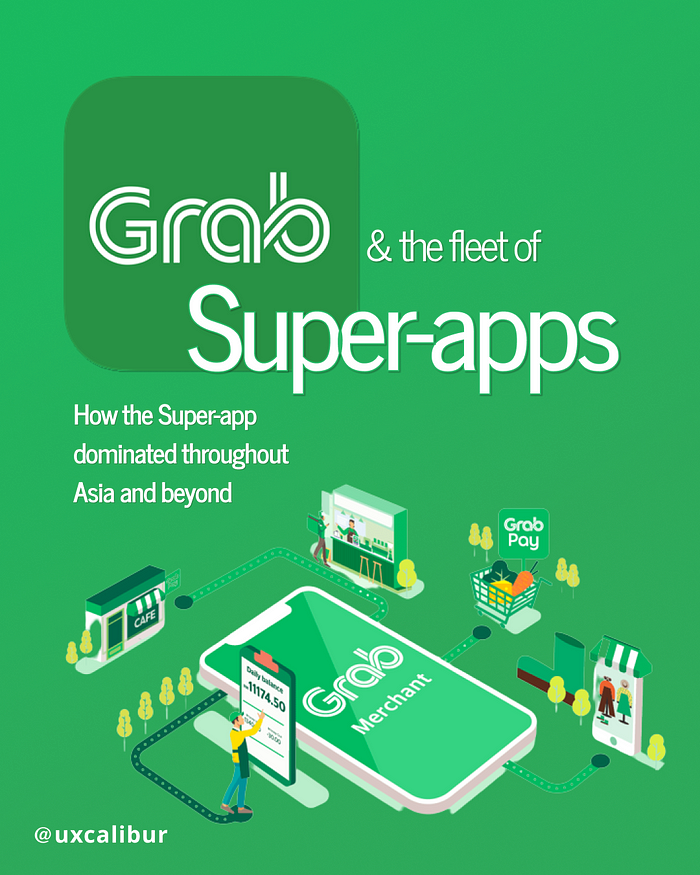

The Super-app Experience
source link: https://uxplanet.org/the-super-app-experience-3fd530ac1e5f
Go to the source link to view the article. You can view the picture content, updated content and better typesetting reading experience. If the link is broken, please click the button below to view the snapshot at that time.
The Super-app Experience



As I stood outside of my hotel in Bali, Indonesia waiting for Grab to bring my dinner, a man on a motorbike pulled up to me, wearing a green helmet.
“Hey boss,” he said, slowing down, “Motorbike to the beach?”
I shook my head, mentioning that I was waiting for another Grab — — one that was bringing my food. In the US, these two services would be separate. I’d be ordering my food through a Grubhub and waiting for my Uber to catch some waves.
You’re probably thinking, “But wait! What about UberEats?” Uber has been testing the waters in different verticals, with its UberEats sector responsible for 45% of its 2021 revenue. Truthfully, Uber may be the closest thing to what the Western world has to a super-app like Grab. And yet, UberEats exists as its own standalone application.
What is a super-app anyway? Wikipedia defines it as a mobile or web app that can provide multiple services. When they say multiple, they mean multiple. Grab can get me a car, deliver food, book a hotel, help me pay bank statements, and find a doctor, all within one application. Within super-apps are smaller mini programs that update themselves automatically, meaning there’s never any reason to go to an app store to make sure the latest program is being used.
The super-app is big in Asia. Grab has 180 million users in Southeast Asia, where you can find it in places like Thailand, Singapore, and Indonesia. China has its own super-app, called WeChat, while South Korea uses Kakao. South America has even gotten into the mix, with apps like Rappi and Magalu providing similar services.
So why are these apps taking off in certain places and not others? First is perhaps the fact that consumers in many of these places use an underpowered smartphone compared with your average Westerner. That means the capacity for their devices to hold many apps is limited. A super-app, therefore, makes sense. However, the design of the app is also important. Grab, and other super-app successes, put an emphasis on understanding the unique behaviors of the markets they’re in. Take, for example, how heavy the traffic is in Indonesia. Companies like Grab specifically hire motorbike riders to weave through the traffic. In Indonesia, these bikes are called ‘ojek’ — found in the name of Grab’s biggest rival, Gojek (“go” + “ojek”… get it?).
In the same vein, after Covid-19, Grab made it a point to launch programs to help MSMEs (Micro, Small and Medium Enterprises) succeed. The country has a total of 64.2 million MSMEs that make up about 97% of all employment. This is something that can only be accomplished by an app that is hyper-localized.
Would this type of localization work in the West? It’s possible, but consider what a melting pot cities like New York and Los Angeles are. While Indonesia has large cities of its own, there is a certain homogeneousness that exists there, as with China and South Korea. With the exception of Bali, Indonesia is predominantly Muslim, leading the Grab app to recommend places that are Halal to its user base. This could never work in the United States, being that religion is just one example of how different two next store neighbors in Brooklyn can really be. How the West digests content varies more across cities and countries because there are more unique differences in their populations. Having one app may make less sense, since it would need to be localized for many different communities all at once.
Perhaps another reason why the West is reluctant comes down to risk. The ability to do multiple things from one app can result in a more seamless user experience. It means I don’t have to have a lot of things open or have to search through my iPhone for where I put that app icon (although the iPhone’s search function has since gotten easier). But does that suggest using multiple apps for different tasks makes for a bad one? Not necessarily. In October of 2022, South Korea’s super-app Kakao went down, sending the country into a frenzy. This snafu led to the co-CEO resigning and the company planning to invest more than $300 million to build a data center to ensure this would never happen again. This kind of outage with an all-in-one app is a lot more serious than if Instagram goes down for a few hours — they house a person’s digital life. In South Korea, for example, Kakao began as a messaging app but now acts as a grocery service, taxi service, and more, meaning any downtime is quite a big deal.
Additionally, regulation plays a big role in why the West has not truly entered the super-app space. Super-apps are powerful because they can understand their user and all of their needs through data. This data-sharing through every aspect of a user’s life means they know when a user is moving, needs groceries, needs a doctor, and is behind on a bill payment. Many of the countries where super-apps are popular have looser data policies compared with the West, especially Europe, which since 2018, has had the toughest privacy and security law in the world in GDPR. Data and privacy are even the focal points of what companies like Apple boast about, probably because there is an increase in societal distrust of big tech in general.
Despite our reluctance, however, there is a lot we can learn from the success of super-apps elsewhere. Grab itself is a lesson in how to understand a customer and create a seamless user experience that is usable, enjoyable, and delightful. We don’t necessarily need one app to rule them all for the US or other Western markets. But we should think about how we can link experiences together in a way that makes sense for customers. Consider how Elon Musk is thinking about Twitter, a platform that has notoriously been criticized for not making money. Would it be plausible to pay for groceries or order a car straight from where you tweeted? Maybe. And he’s definitely got aspirations in that direction. Instead of taking the Frankenstein’s monster approach we saw with Facebook, though, a successful strategy here would likely have to be thoughtful and nuanced. Less super-app and more value-added services.
The truth is, the super-app will probably never make it to our shores in its current form. The appetite just isn’t there. It’s what we borrow from that strategy and how we build on it and customize it for users that will be interesting to watch.
For more UX content, check out my Instagram at @UXcalibur

Recommend
About Joyk
Aggregate valuable and interesting links.
Joyk means Joy of geeK